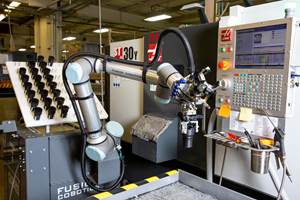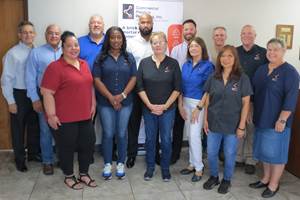Skills Gap Statistics Paint Alarming Picture
Many attendees in Orlando in a couple of weeks, walking the aisles and seeking out new equipment, materials and services will be taking a break from another very important search that consumes them back at their facilities: the search for people.
The Plastics Industry Association (PLASTICS) sized up the plight plastics firms face in its 2017 Size & Impact Study, noting that “While the skills gap and the decline of a qualified manufacturing workforce have been discussed for many years now, the nation has reached the point where their impacts will begin to be felt more acutely.”
In that report released in December, PLASTICS forecast that while employment in plastics manufacturing will expand .9%, .7% and .6% from 2017 to 2019, that rate is slower than the three prior years and five of the last six going back to 2011. Total employment in 2019 is forecast to reach 735,000, not including captive operations. It stands at 719,000 today.
Plastics is not alone in its search for workers. According to the Manufacturing Institute, 3.5 million manufacturing jobs will need to be filled in the next decade, but 2 million of those will remain vacant, as economic expansion and the retirement of baby boomers stoke a self-sustaining fire. According to the institute’s most recent survey, 35% of respondents believe a shortage of skilled workers will be the top impediment to growth next year.
University graduates will supply some new employees for plastics firms in need, albeit mostly only having classroom and lab skills versus shopfloor knowledge. David Kazmer, current chair of the University of Massachusetts Lowell’s plastics engineering program says current enrollments are at an all-time high. At the previous peak in the 1970s, Kazmer says approximately 50 to 60 students would graduate annually. The largest classes at this time—freshmen and junior years—have 75 students each with approximately 340 in total across the program.
Beyond UMass Lowell there are other plastics engineering programs in the U.S., but compared to other disciplines, the amount of plastics options in academia is disproportionately small compared to the number of people who eventually have to work with the material.
Online university database Cappex lists 13 schools with a polymer/plastics engineering major (although its list left of some well-known programs, including Ferris State and Pittsburg State). Across the U.S., only four of those have ABET (Accreditation Board for Engineering Technology) certification: UMass Lowell, University of Wisconsin Stout, Penn State Behrend and Pittsburg State University.
In 2015, appreciating the need to help people in industry working with plastics that were not educated in plastics, the American Injection Molding Institute (AIM) was created by Beaumont Technologies. David Hoffman, director/instructor, Plastics Education & Training at AIM, says that since that time 63 students have graduated from its Plastics Technology & Engineering (PTE) Certificate program, which achieved ANSI accreditation in December 2017, with three more classes currently in progress. That combined with the hundreds of plastics engineering degrees awarded offers some relief, but what if more engineering programs offered more than a chapter or lecture or two on plastics.
In 2015, 35,730 mechanical engineering degrees were awarded in the U.S., according to DataUSA. How many of those know a thermoplastic from a thermoset? “We take an informal poll every class,” Hoffman says. “We say, ‘O.K.—how many people have actually gone to school for plastics?’ Rarely do people raise their hands, and yet, these people are working in the plastics industry, and nobody has told them anything.”Related Content
Four Industry 4.0 Tech Adoption Insights from Indiana Plastics Manufacturers
As more plastics manufacturers step into the Fourth Industrial Revolution, insights have emerged about how best to approach the digital transformation journey.
Read MoreGeneral Polymers Thermoplastics to Further Expand Distribution Business
NPE2024: Following the company’s recent partnership buyout, new North American geographic territories are in its sight.
Read MoreInside the Florida Recycler Taking on NPE’s 100% Scrap Reuse Goal
Hundreds of tons of demonstration products will be created this week. Commercial Plastics Recycling is striving to recycle ALL of it.
Read MoreBreaking News From NPE2024
Here is a firsthand report of news in injection molding, extrusion, blow molding and recycling not previously covered.
Read MoreRead Next
See Recyclers Close the Loop on Trade Show Production Scrap at NPE2024
A collaboration between show organizer PLASTICS, recycler CPR and size reduction experts WEIMA and Conair recovered and recycled all production scrap at NPE2024.
Read MoreFor PLASTICS' CEO Seaholm, NPE to Shine Light on Sustainability Successes
With advocacy, communication and sustainability as three main pillars, Seaholm leads a trade association to NPE that ‘is more active today than we have ever been.’
Read MoreBeyond Prototypes: 8 Ways the Plastics Industry Is Using 3D Printing
Plastics processors are finding applications for 3D printing around the plant and across the supply chain. Here are 8 examples to look for at NPE2024.
Read More












